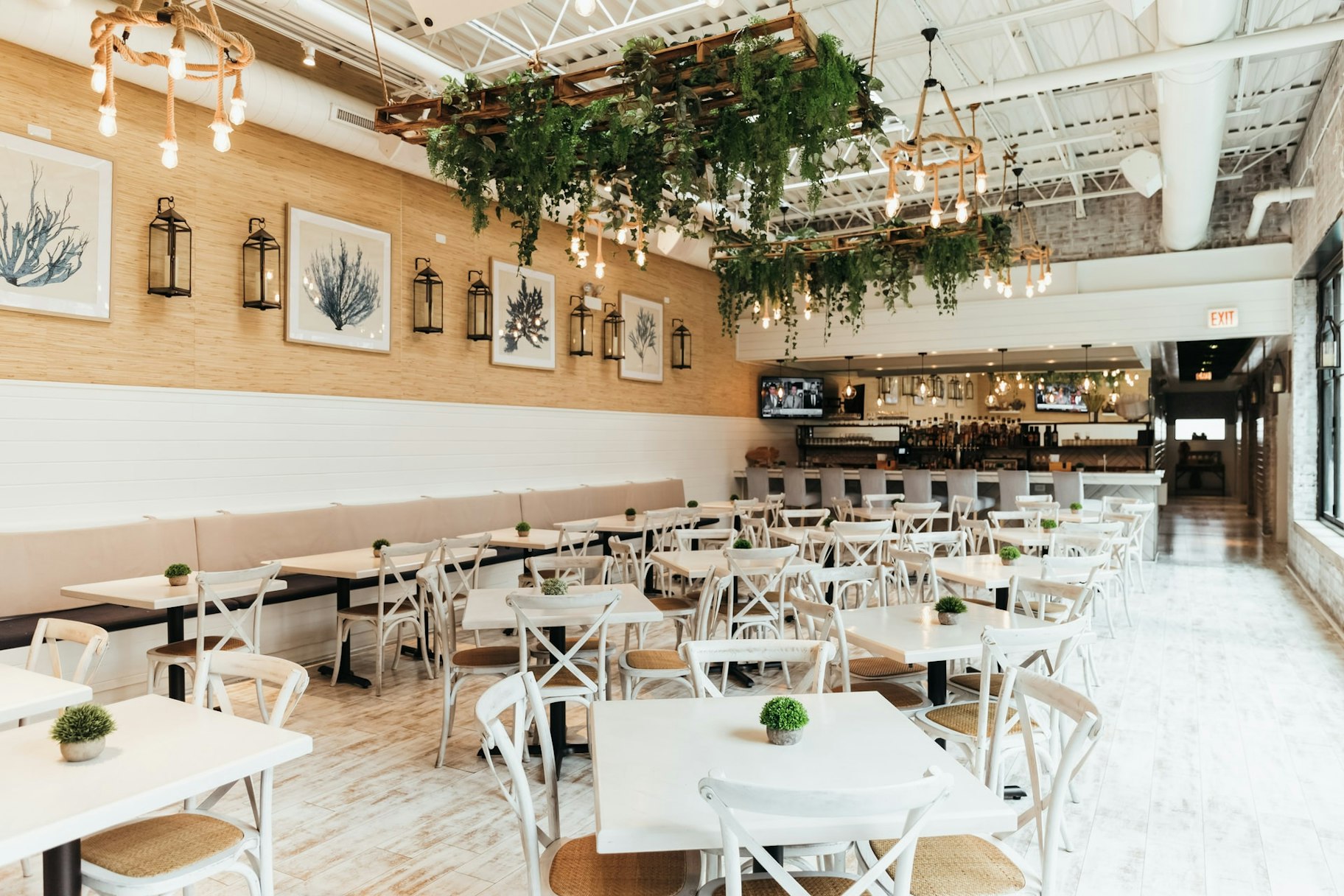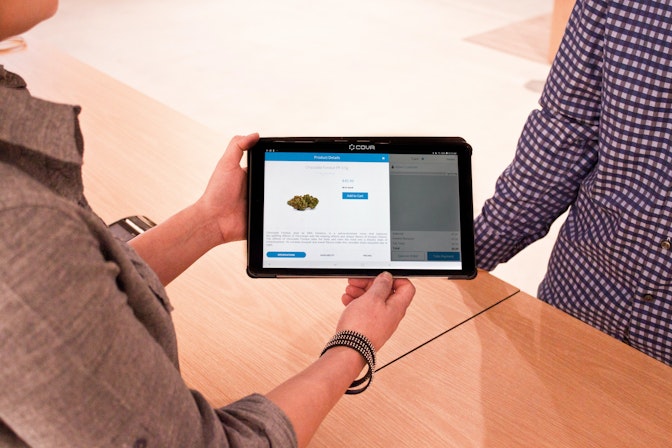COVID-19 lockdowns have had a disastrous effect on restaurants.
Business Insider reported that one in five U.S. restaurants could close permanently, dubbing it the “restaurant apocalypse.”
And even if the virus were to recede soon, will consumer psychology return back to the way it was? Will people happily mingle with strangers in a crowded restaurant again?
One thing’s for sure: The future is uncertain.
Restaurants must adapt to survive – and then thrive once more.
Thankfully, the online food delivery sector has seen a massive rise in orders as a result of the lockdown measures and social distancing – and it’s expected to continue growing.
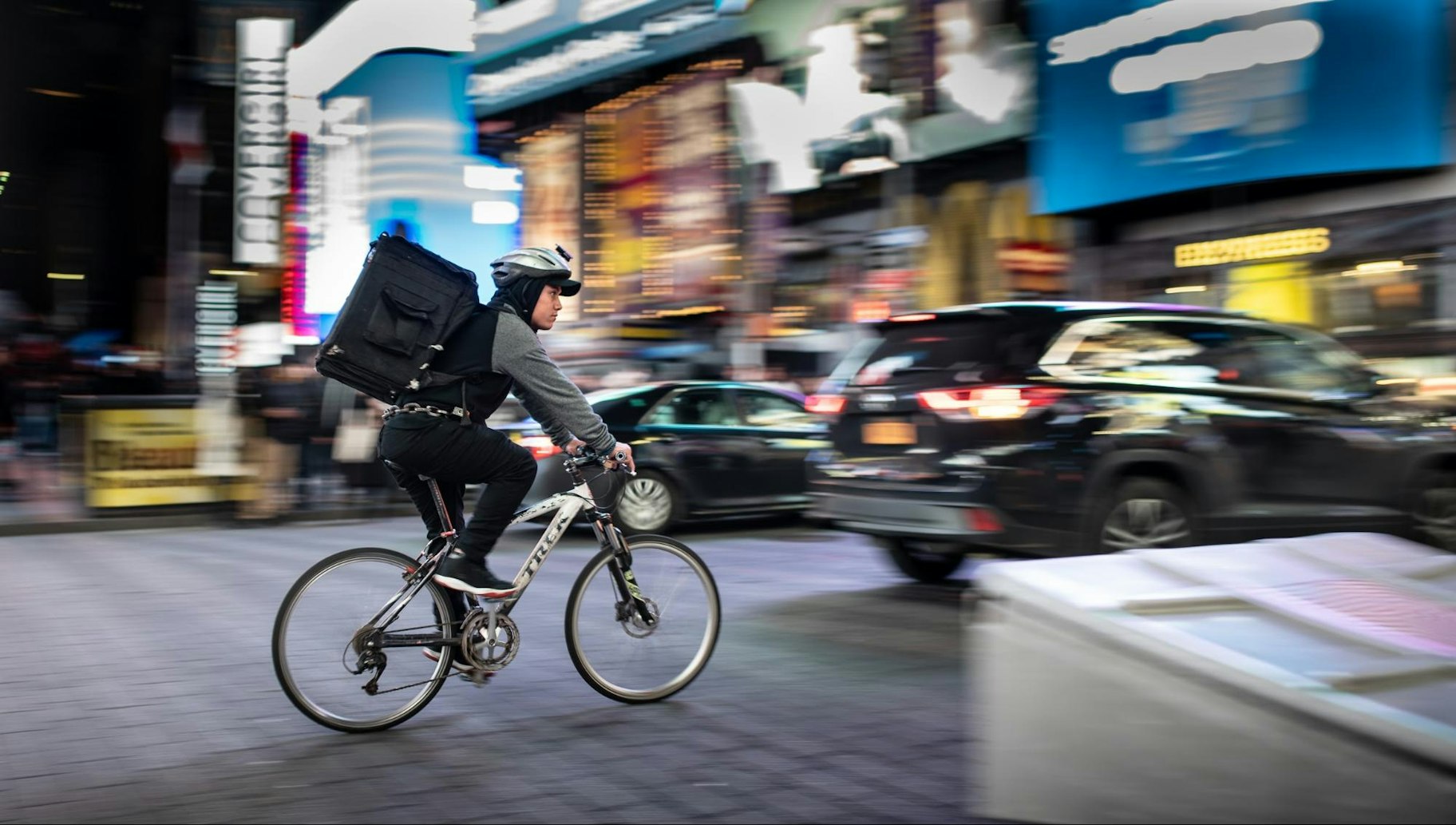
So, how can you start your own food delivery business to survive COVID-19?
This article will take you through the best online ordering systems for restaurants, how to move your restaurant online, and how to promote your restaurant.
Let’s dive in.
Post Contents



3 Types of Online Ordering Systems for Restaurants
If you’re wondering how to set up online ordering for a restaurant, the first thing you need is an online system.
There are three types of online ordering systems for restaurants:
- Food delivery marketplaces
- Point of sale (POS) add-ons for restaurants
- Third-party white label services
Let’s run through each of these opportunities and their pros and cons. We’ll also take a quick look at some of the top services available in each category.
1. Food Delivery Marketplaces
This type of restaurant food ordering system includes well-known apps such as Uber Eats, Grubhub, and Postmates.
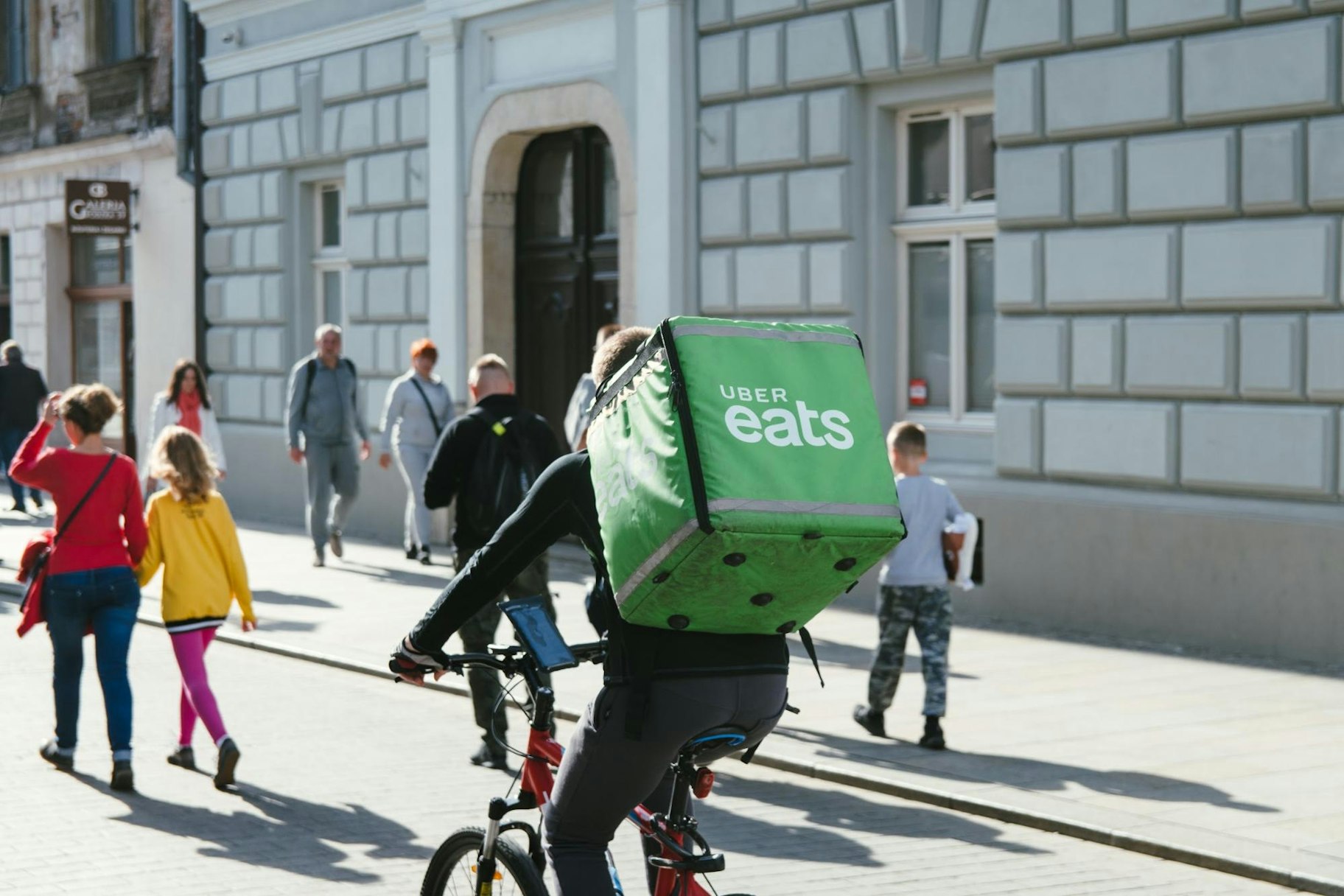
Think of food delivery marketplaces like these as software-based middlemen who connect three parties:
- Restaurants who sign up to provide their food
- Drivers who earn money picking up and delivering food
- Customers who order and consume the food
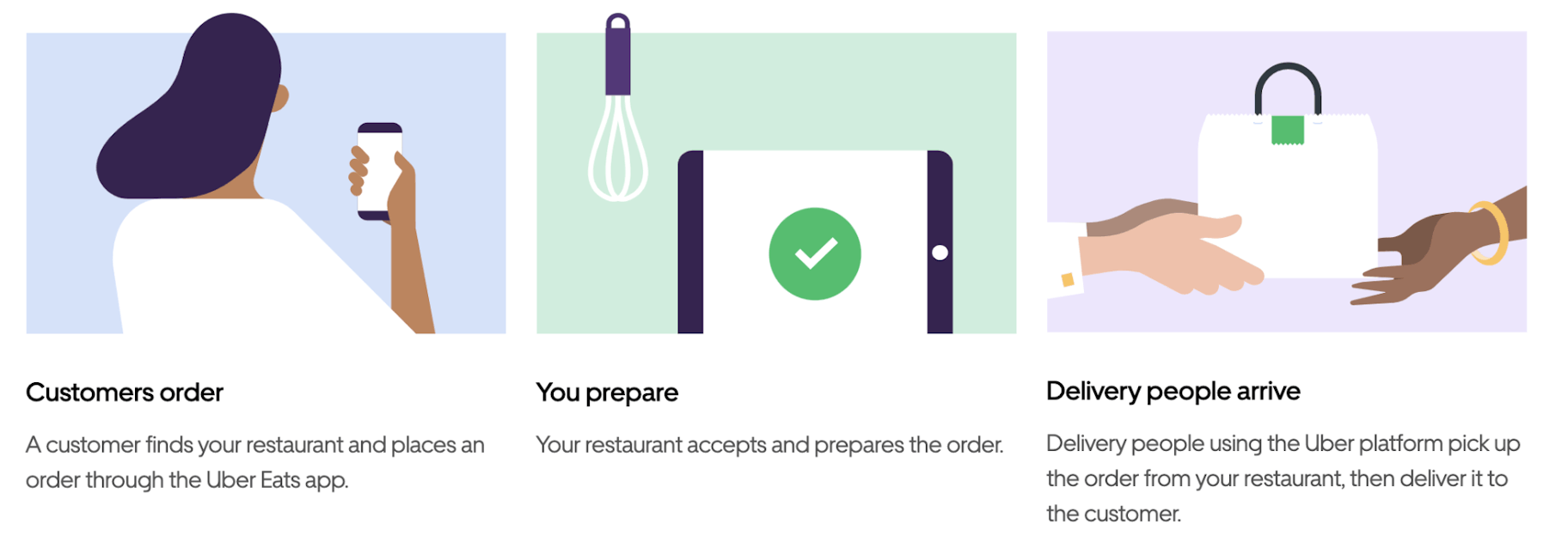
The main advantage of these platforms is their existing customer base. This makes it possible for restaurants to sign up and start making sales with little-to-no internet marketing.
However, many of these apps charge hefty fees for the use of their service – often 10 to 30 percent per order.
What’s more, 43 percent of food and drink professionals said they believe third-party apps interfere with the direct relationship between a restaurant and its customers.
With an app playing go-between, there’s no way for restaurants to remarket to customers or develop strong customer relationships.
The upshot? Fewer repeat orders.
Here’s a quick rundown of three online food delivery apps.
UberEats: With a vast amount of drivers, delivery is sure to be swift. UberEats also waived delivery fees for independent restaurants during the COVID-19 pandemic.
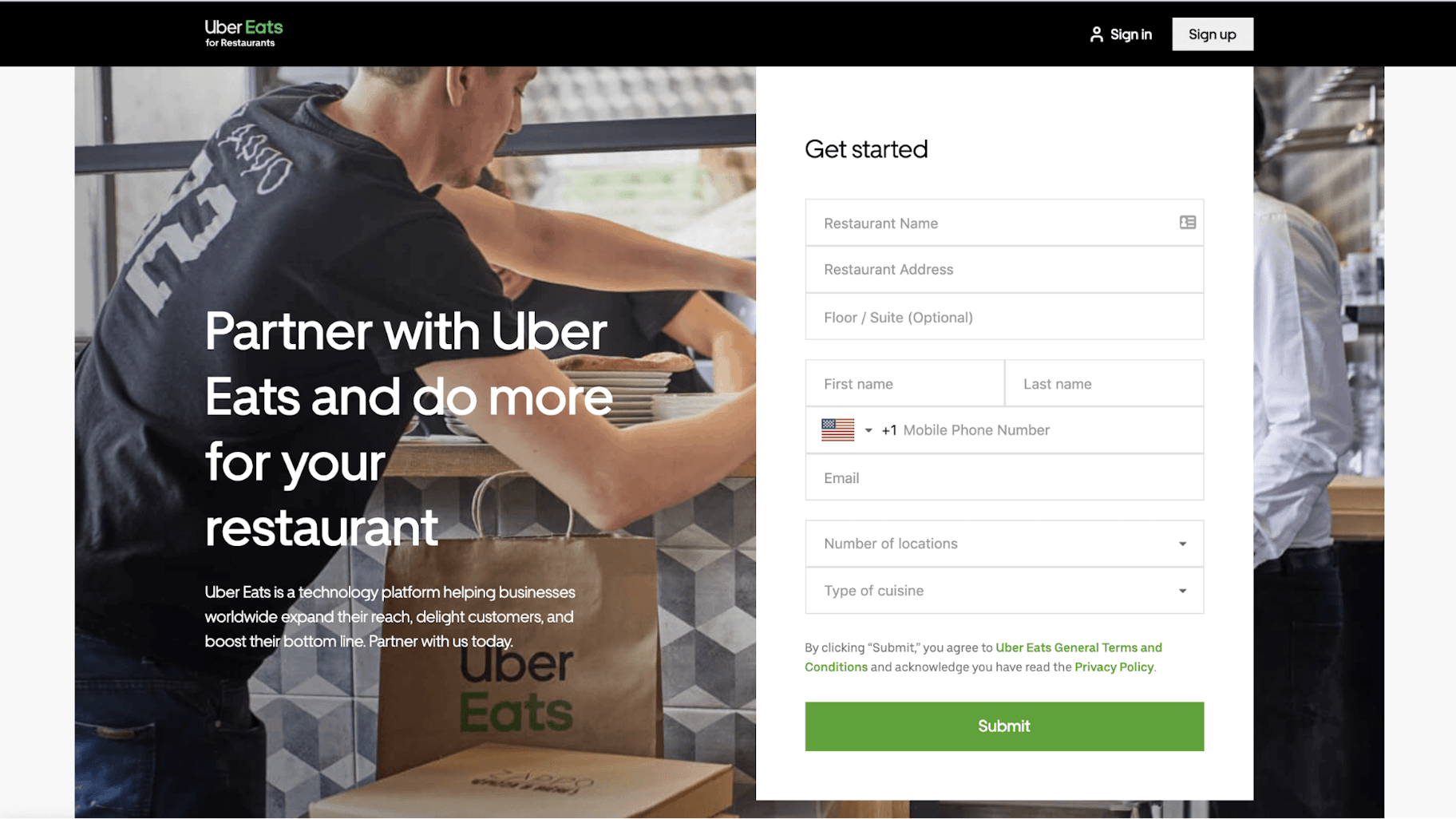
GrubHub: One of the key advantages to this marketplace is the convenient reorder feature that can help keep your restaurant top-of-mind.
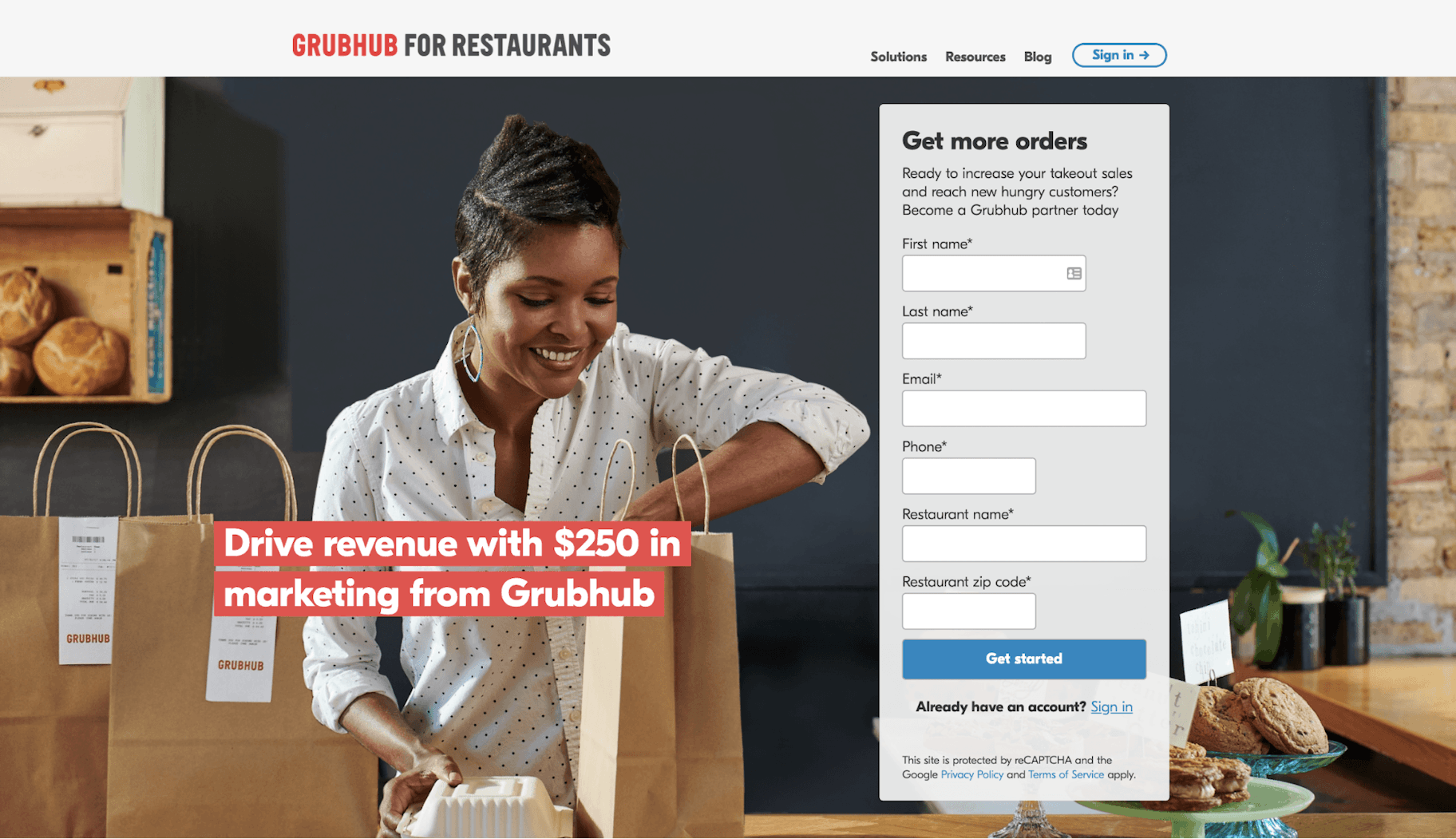
Postmates: This service differs from the two mentioned above in that customers can use the app to order everything from take out to party supplies.
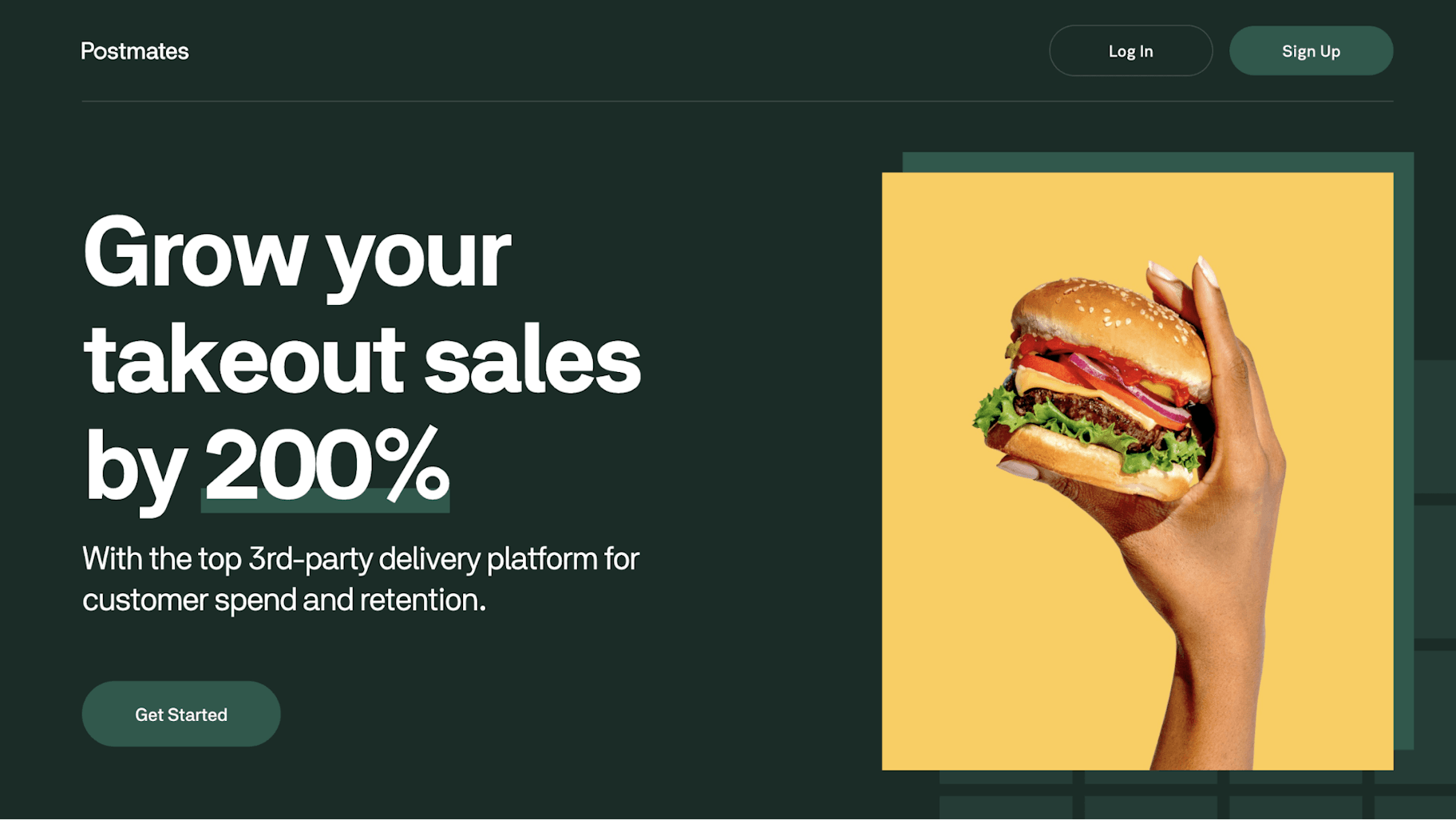
2. POS Add-Ons for Restaurants
It’s likely that you already use a POS system for your restaurant.
If so, many POS systems have add-ons that allow you to enhance your current system to take online food orders. These add-ons are built for your POS system, so this option is arguably the easiest to set up.
What’s more, when placing an online order, a customer is more likely to use a restaurant’s website than a third-party site, like Grubhub. Also, 70 percent of consumers would rather order from a custom app than a third-party site.
One of the most significant benefits is that you retain complete control over your marketing, branding, and customer relationships. This means you can run online loyalty programs and remarket to existing customers.
In other words, there’s more opportunity to increase customer retention and actively promote your business.
However, this does mean that you’re entirely responsible for generating online orders through your digital marketing efforts.
Often, you’ll need to pay an additional fee to access the add-on. Still, this fee is likely to be the least expensive way to move your restaurant business online.
The most significant disadvantage is that not all POS systems have this option. If you love your current POS system, you may be unwilling to switch to a different service solely for this one feature.
Here are three POS systems that provide an add-on to process online food orders.
Toast: This POS system is built specifically for the restaurant industry. The service is intuitive and highly customizable.
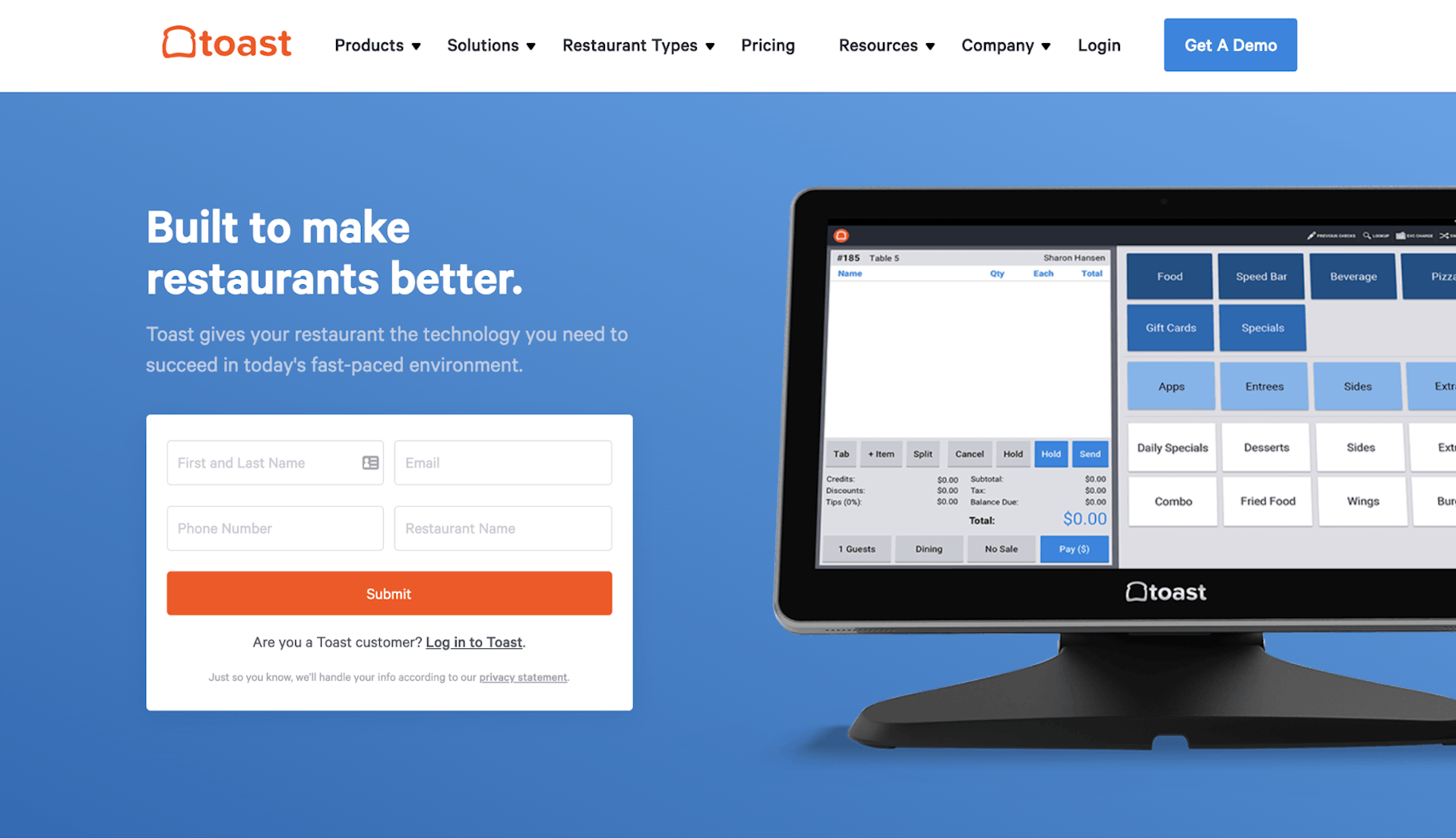
Upserve: This popular POS and online ordering system for restaurants is offering a limited time offer of 12 months for free.
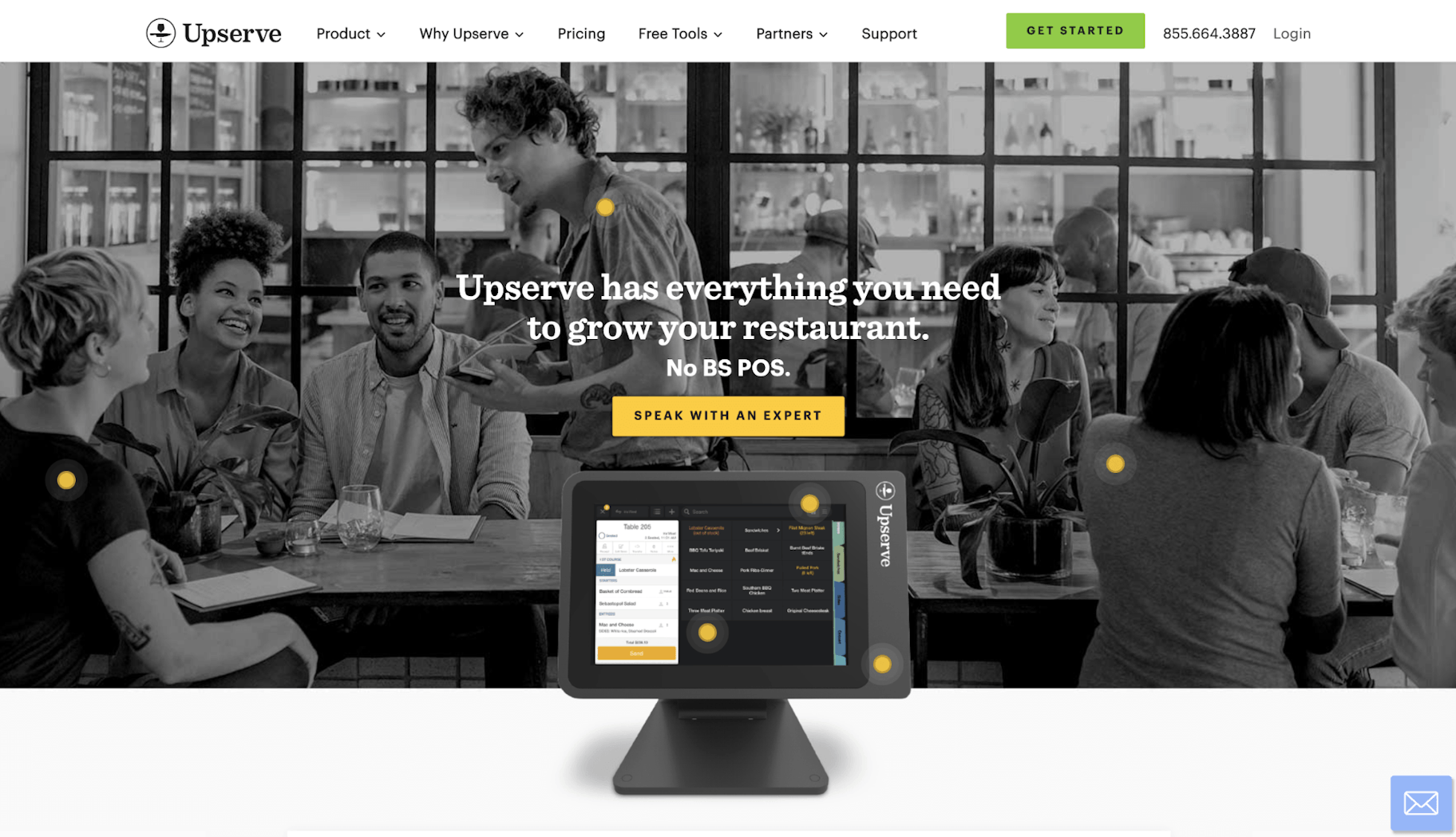
Shopify POS: Shopify focuses heavily on servicing ecommerce and retail stores. However, if you use Shopify for your restaurant website, you could use a Shopify app like Local Delivery to start taking food orders on your website.
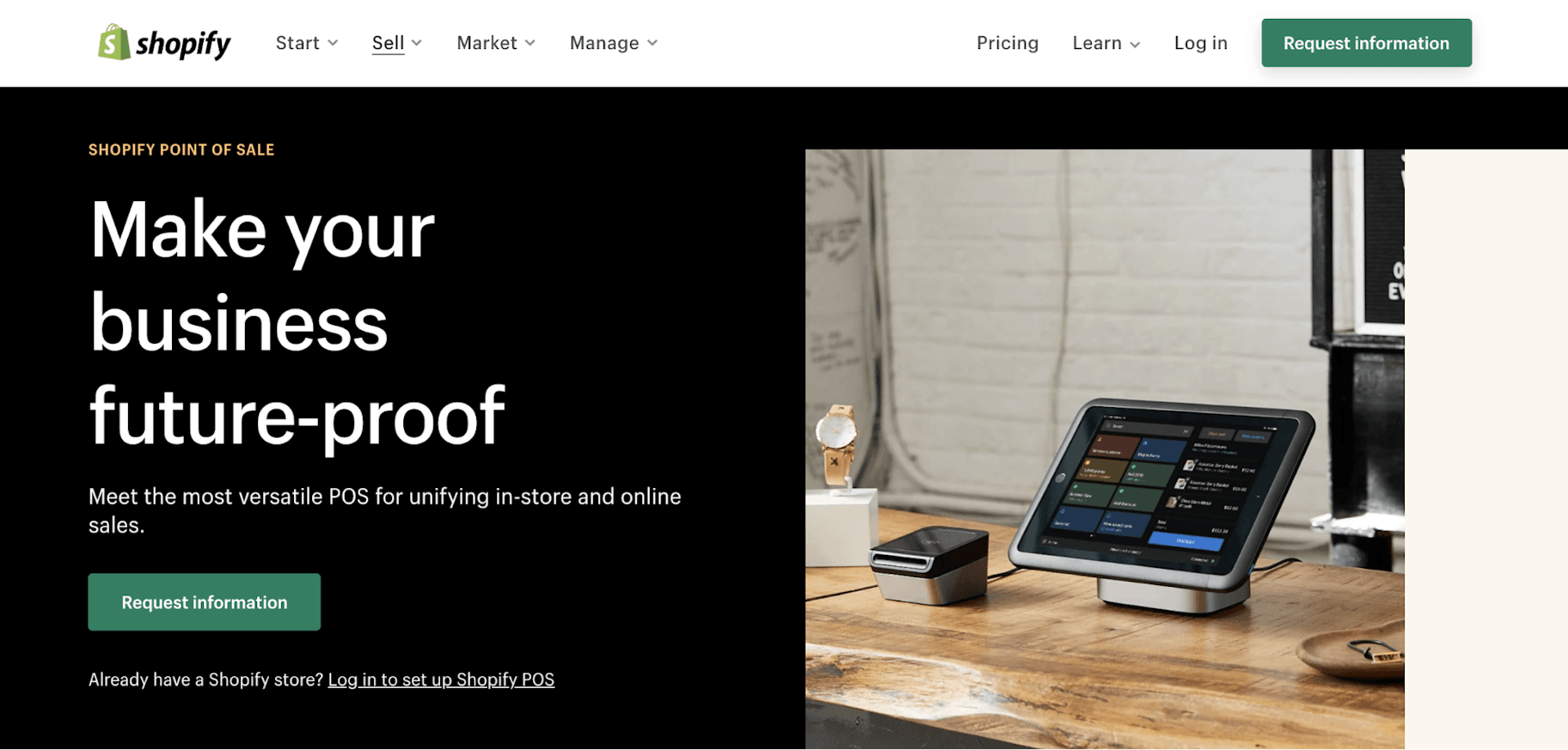
3. Third-Party White Label Services
These services help restaurants to set up their own online ordering system.
In the words of the service ChowNow, “Your brand. Your customers. Your online ordering system. Powered by ChowNow.”
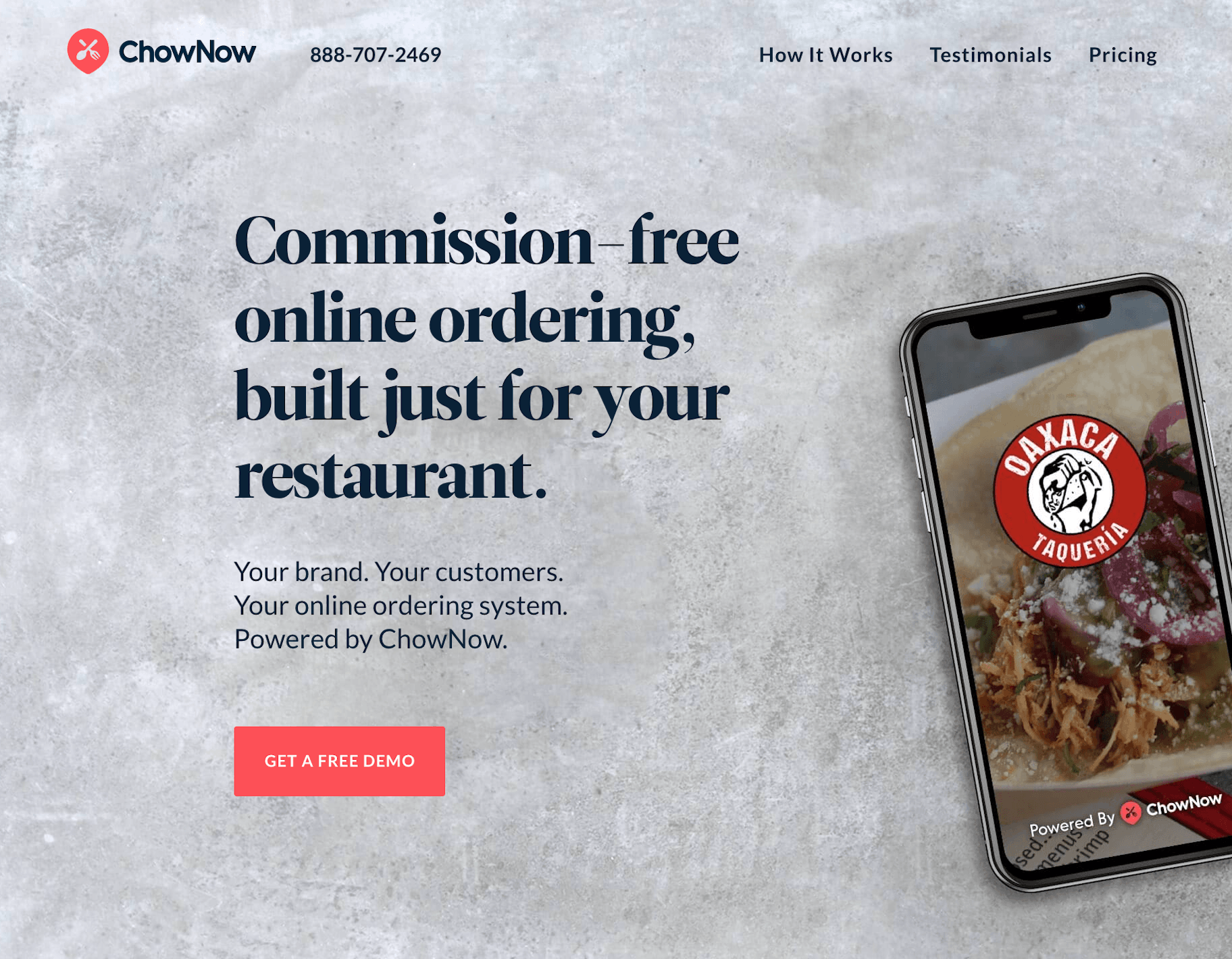
The key advantage of this type of service is that it allows you to continue using your current POS system, while also maintaining control over your branding, marketing, and customer relationships.
Here’s a mockup from MenuDrive to illustrate this point:
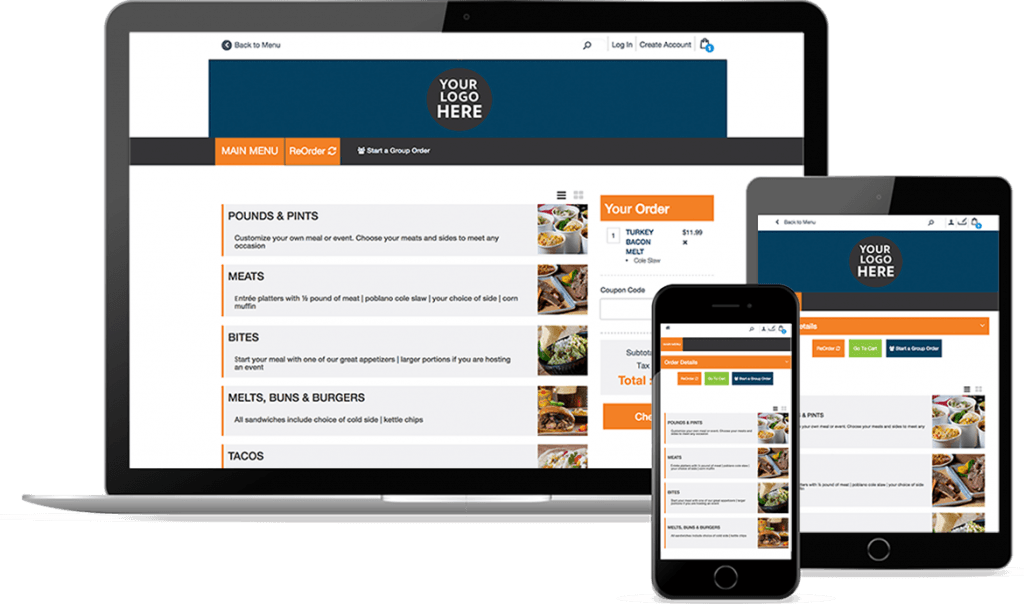
This means you don’t need to overhaul your entire system, and can still run loyalty programs and marketing campaigns to your growing base of customers. In other words, it’s relatively easy, and you still get the opportunity to grow your business actively.
These services also provide many customization options, so you can scale your online food delivery business in any way you’d like.
On the downside, this type of service typically charges monthly or annual fees that are generally more expensive than a POS add-on.
Also, many of these services integrate with popular POS software, but you may find that your preferred service won’t work with your existing POS system.
And again, you’re also responsible for generating online orders through marketing.
Here are three third-party, white label services that you could use to move your restaurant business online.
MenuDrive: This service provides a built-in loyalty program to increase repeat customers. It also offers an optimized mobile experience, and can even help with marketing and promotions.
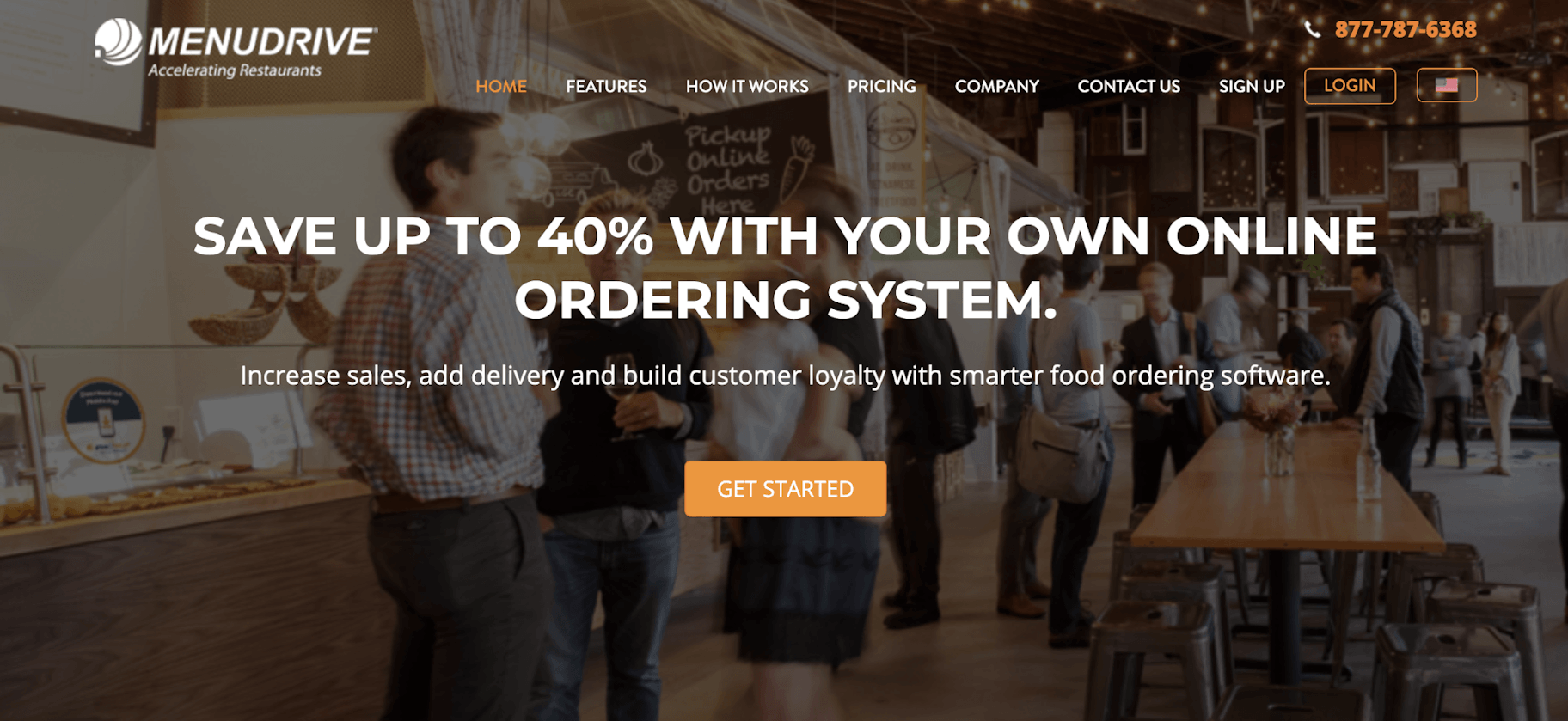
ChowNow: This is another hugely popular service. It has an intuitive mission control dashboard and works across all smart devices.
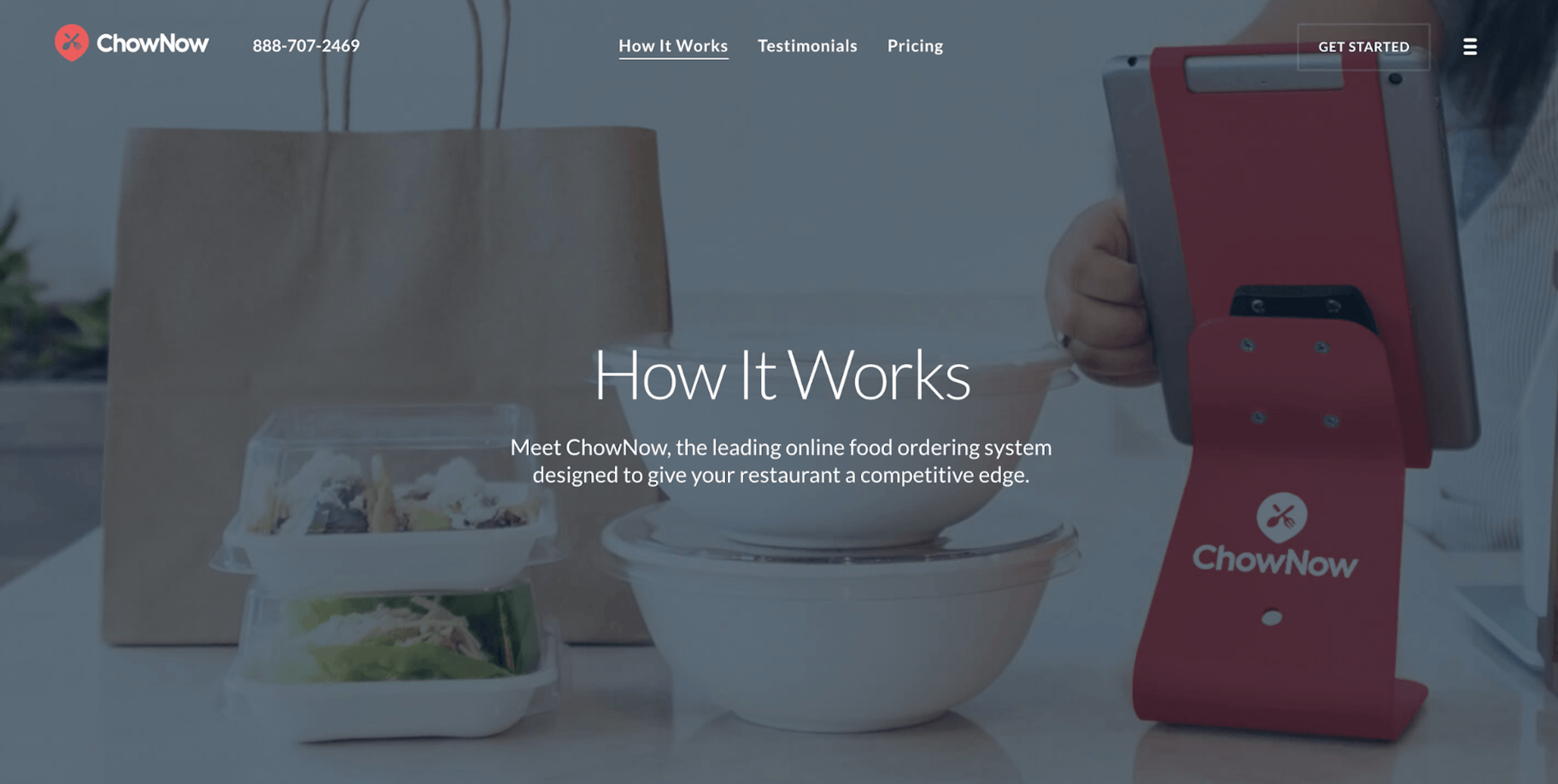
GloriaFood: This service is excellent for restaurants in need of a quality, low-cost solution. GloriaFood offers a free plan with no upfront or commission fees. You can upgrade to a monthly payment plan to access additional features, such as branded apps.
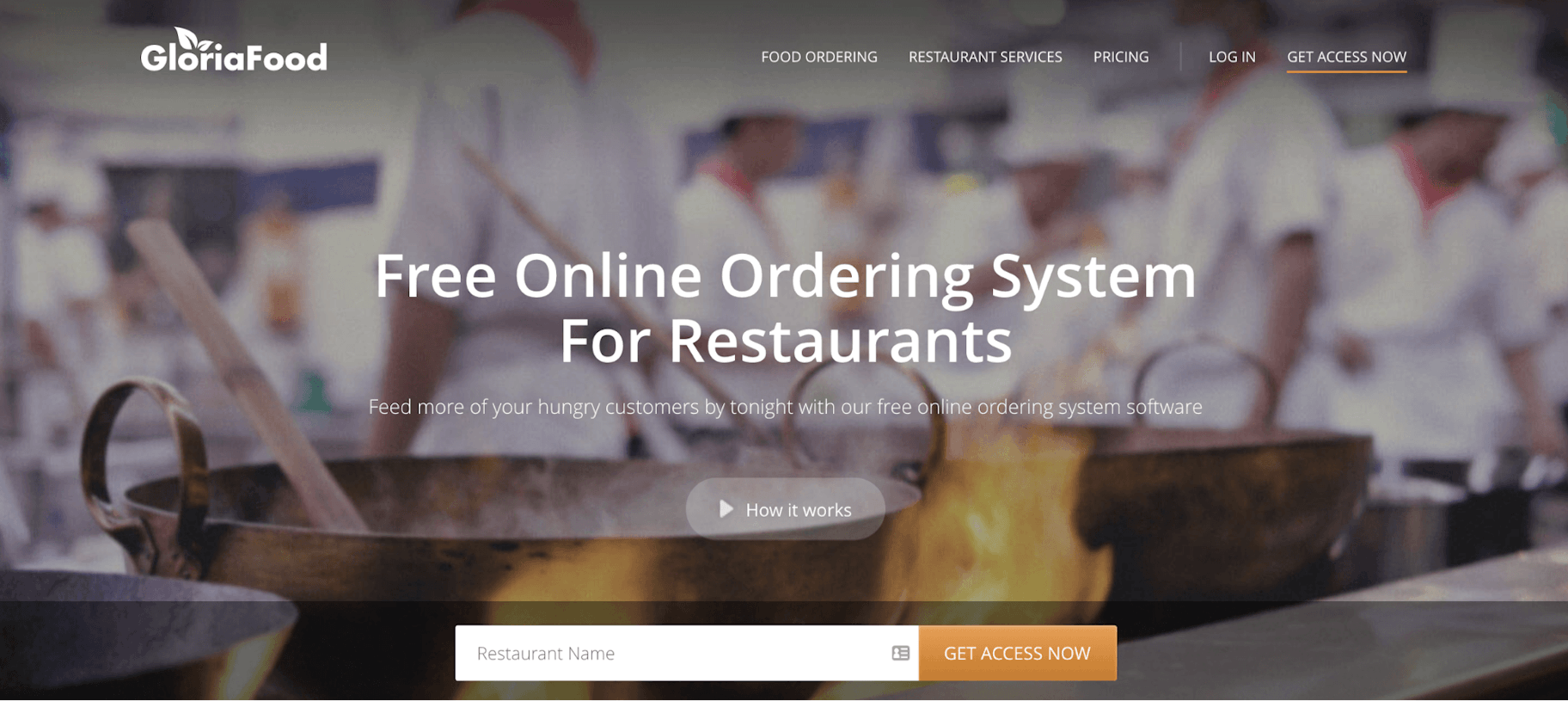
6 Tips to Help You Start a Home Food Delivery Business
Now that you know how to move your restaurant online, let’s run through six things to consider to help increase your chances of success.
1. Estimate the Size of Your Food Delivery Area
One of the first things you’ll need to consider is the size of the geographical area you’ll serve.
It might be tempting to serve an extensive area, as you’re likely to receive more orders. However, if you receive more orders than you can handle, customers may receive their food late, cold, or not at all – which could lose you customers or kill repeat orders.
Remember, customers want to receive hot food as quickly as possible. One-third of consumers surveyed said they are willing to pay more for faster food delivery.
So, start small and scale-up.
Make sure you always have the operational capacity to provide a high-quality service. This will help you grow your food delivery business well into the future.
2. Identify New Food Delivery Opportunities
Some restaurants might find it challenging to meet the demand of growing online orders. This is especially the case if you have a small restaurant kitchen or usually prepare a few intricate, specialist dishes for in-house diners.
If you’re in this position and can’t scale production quickly, look for other ways to increase sales. For example, you could offer snack boxes, make-at-home meal kits, or wine delivery.
The New York bar, Dante, has quickly transitioned to delivering cocktails and other drinks to keep the business alive during COVID-19 lockdowns.
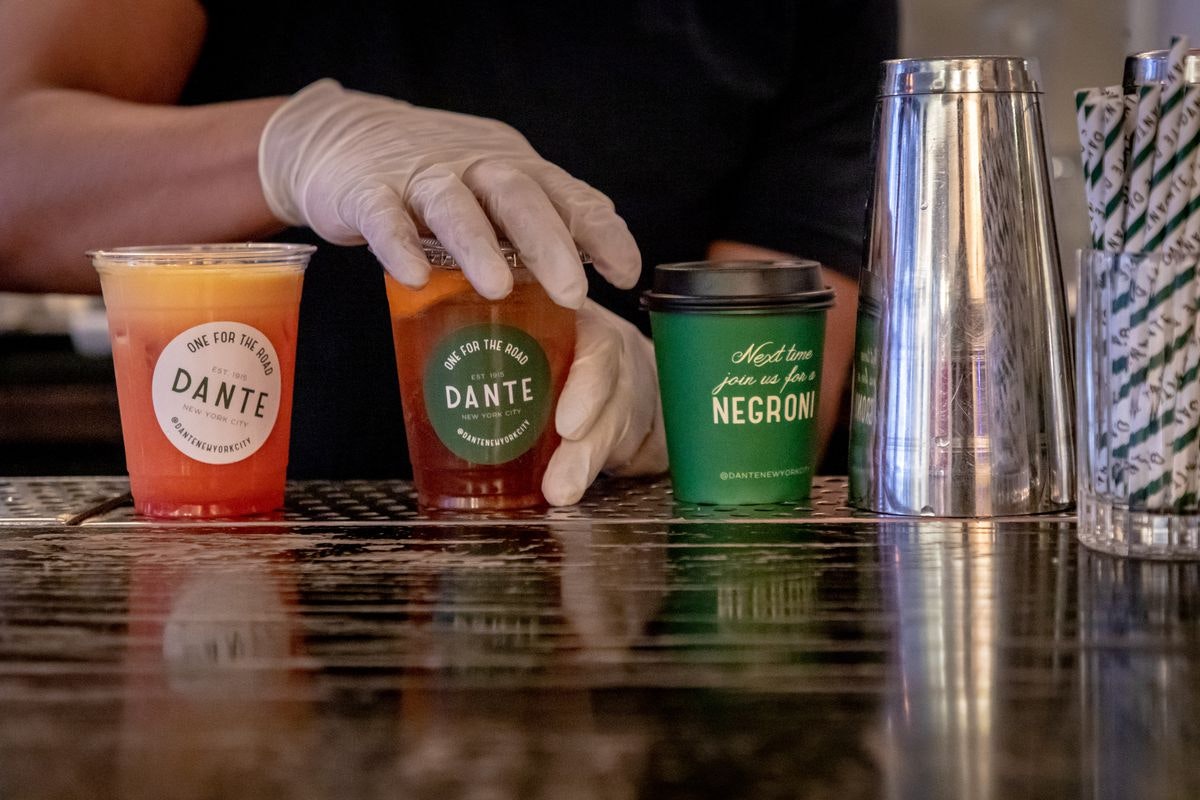
According to one study, 41 percent of consumers said they would purchase a make-at-home meal kit from their favorite restaurant.
3. Rework Your Restaurant Menu for Deliveries
You may find that much of your current menu is unsuitable for delivery. Perhaps the food would be cold or appear ugly when it arrives or may be difficult to scale.
If you run into any of these problems, consider reworking your menu. Let go of any meals that aren’t suitable, and focus on meals that will retain their heat and look presentable in takeout containers.
Also, identify meals that have high margins and are likely to sell well. Highlight these meals on menus with high-quality images and tantalizing descriptions.
4. Focus on Packaging and Presentation
Part of what makes your restaurant unique is the atmosphere and environment that diners experience alongside their food. Whether you run a roadside diner or gourmet restaurant, try to incorporate your restaurant’s unique personality into your online food delivery business.
How can you do this?
Create packaging in line with your brand. Choose colors, fonts, and containers that help to reflect your restaurant experience. Practically, consider using thermal bags, heated containers, or environmentally friendly packaging.
There are countless options available, too. Some packaging even eliminates the need for bags, such as this packaging designed by Joann Arello:
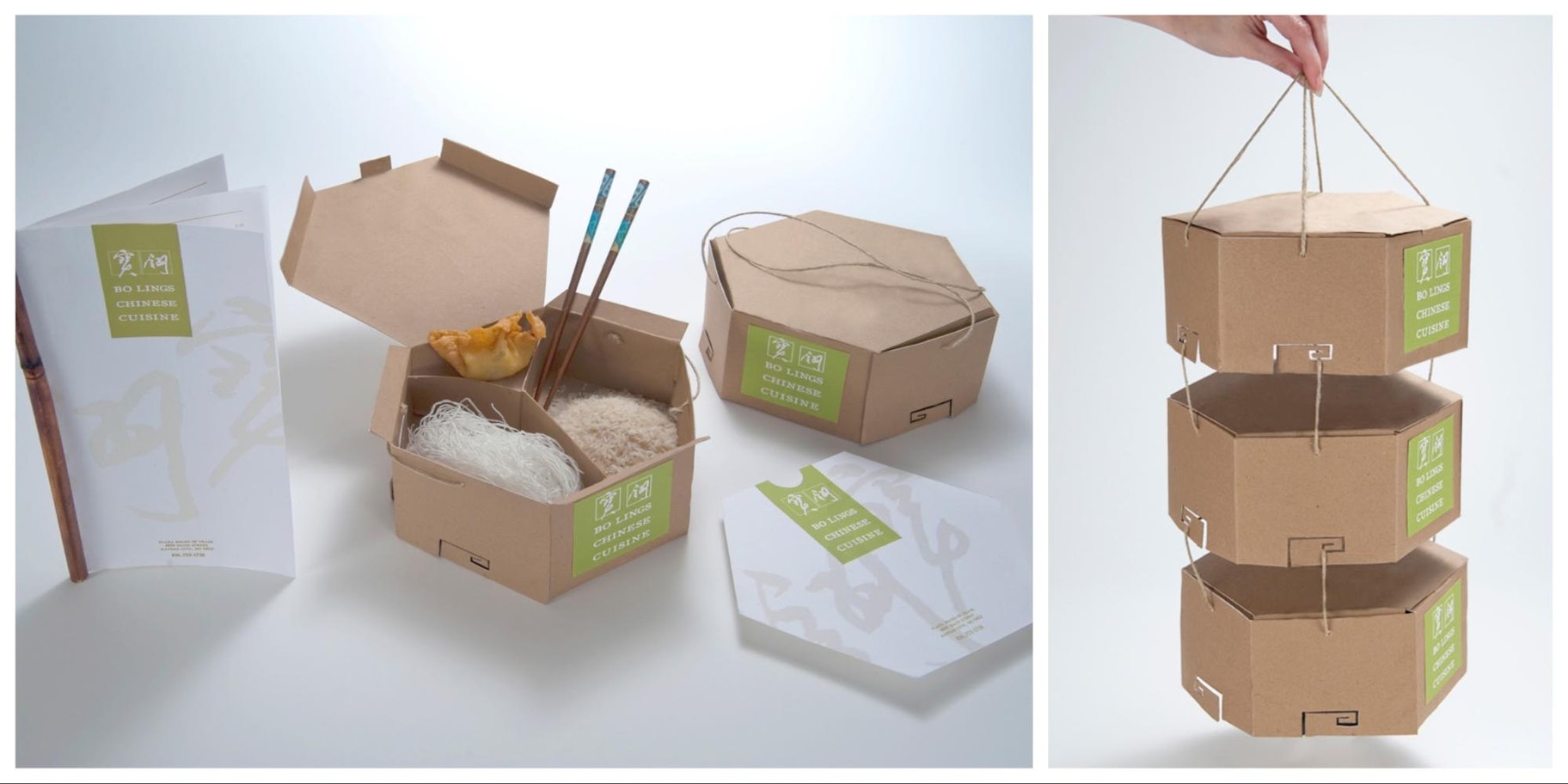
You should also include a printed menu with every order that includes your contact details. Customers may hold onto them and reorder in the future.
5. Plan Your Kitchen Workflow for Deliveries
You’ll need to establish new workflows and train your employees to service your online food delivery orders.
When your restaurant is open, you may need to dedicate an area of the kitchen for preparing take out food, so it doesn’t get in the way of your in-house operations.
You also might want to consider using a different door to give food to delivery drivers. This will prevent your usual atmosphere from being interrupted by the coming and going of drivers.
6. Ensure That You Provide No-Contact Delivery
With the fear of infection looming over the world, providing no-contact delivery is a must for those looking to move their restaurant’s online.
Services like Uber Eats and Grubhub now allow customers to select no-contact delivery. This means that drivers will leave the food at their doorstep rather than physically handing it over.
However, what about if you decide to create your own online ordering system and hire delivery drivers? In this instance, you’ll need to create a no-contact delivery option and train your drivers to cater to customer requests.
How to Promote Your Restaurant Online
Once you’ve moved your restaurant online and have established your operational workflow, you’ll need to find ways to increase orders. Here are five tips to help.
1. Determine Your Restaurant’s Target Market
To run successful marketing initiatives, you must first determine your target market.
Your target market is the segment of potential customers who are most likely to order food online from your restaurant.

When you know who you’re targeting, you’re able to cater to their needs and preferences in all of your marketing activities.
At this stage, it’s worth noting that the vast majority of Americans who order food online are between 18 and 44 years old.
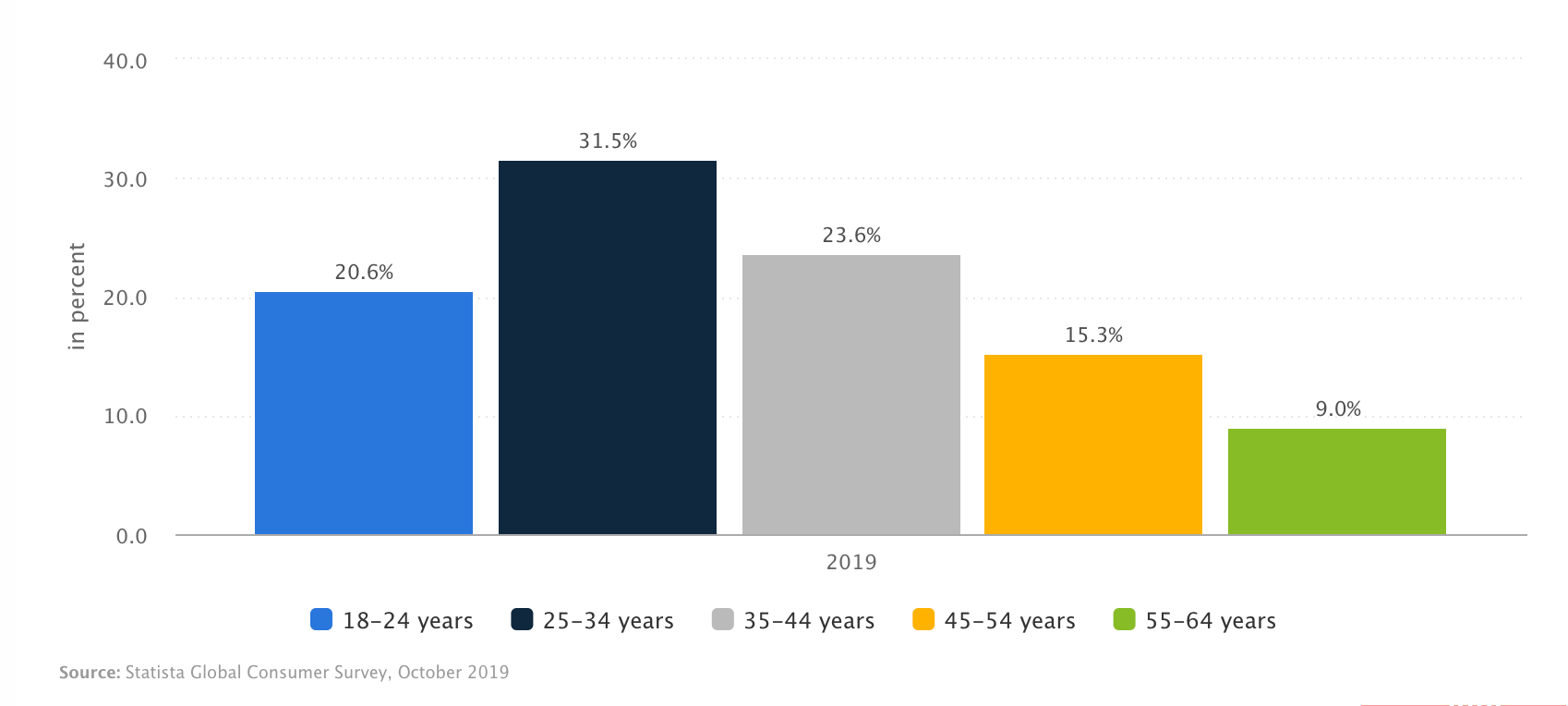
2. Highlight the Benefits of Your Food Delivery Service
In marketing, there’s often talk about benefits and features.
Features are the specific aspects of your service, such as organic ingredients. The benefits are the result that the customer experiences – in this case, a healthy body free from chemical additives and pesticides.
The lesson is simple: Don’t just explain the features, also highlight the benefits.
Aside from the benefits specific to your restaurant, you could also lean heavily on the reasons why people order food online. According to Statista:
- 43 percent order because they didn’t feel like cooking
- 30 percent order to satisfy a craving
- 28 percent order to save time
- 25 percent order for a home game or movie night
- 24 percent order for a family dinner
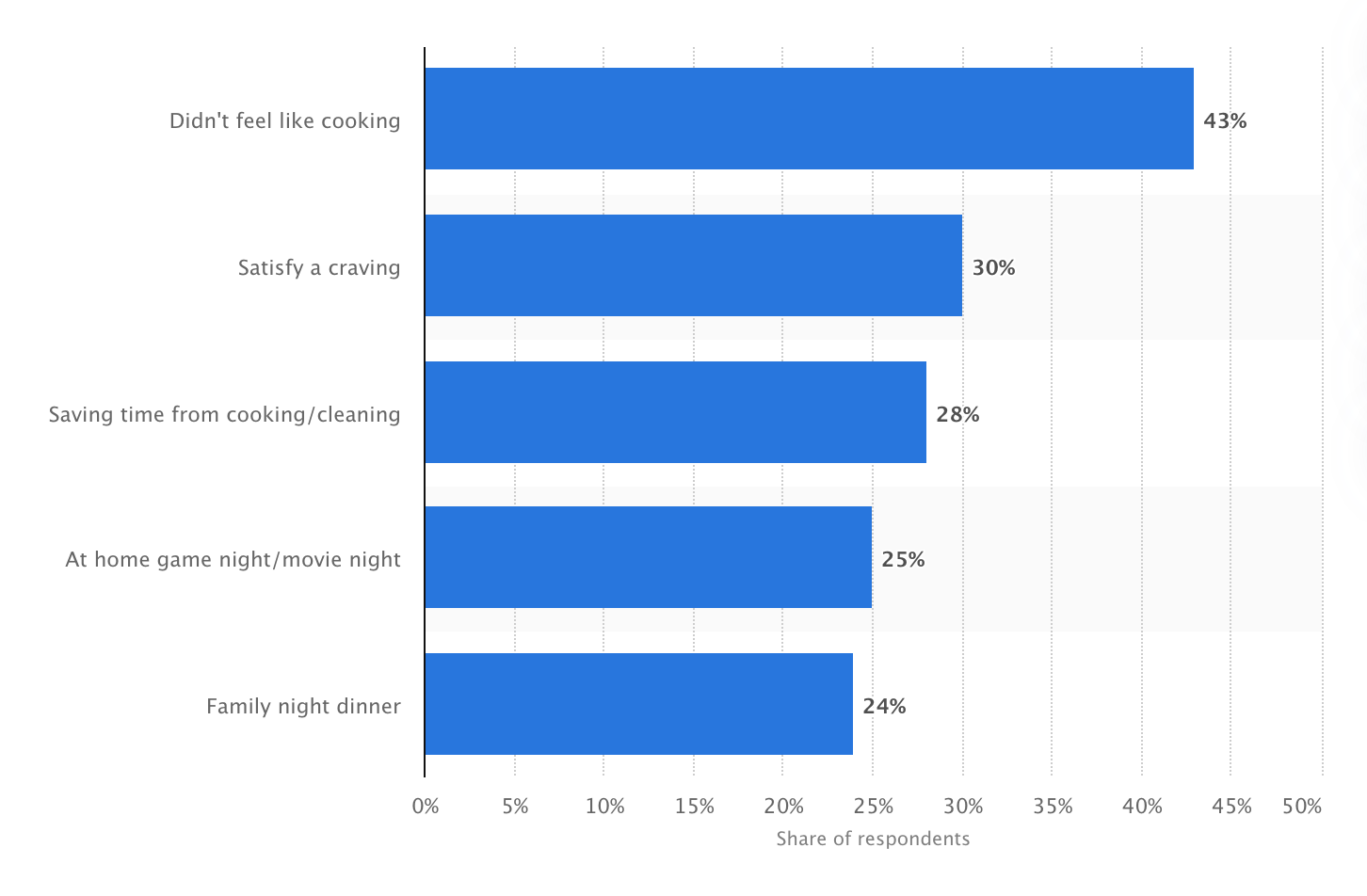
3. Harness Your Restaurant’s Social Proof
Social proof refers to the fact that people are heavily influenced by others’ opinions and actions.
That’s why 61 percent of customers read online reviews before choosing to buy a product or service.
So, take advantage of the social proof you have and continue to gather more.
For example, you could highlight awards, accreditations, and media reviews on your website or social media accounts. You could also spotlight testimonials and reviews from sites like TripAdvisor and Google Reviews.
4. Promote Your Restaurant on Social Media
Engaging your target market on social media is a great way to drum up more online food orders for your restaurant.
Start engaging with your target audience by sharing:
- Takeout promotions
- Behind-the-scenes kitchen prep
- Question and answer posts
- Stunning pictures of your food
- Mini-interviews with the head chef
Sushi restaurant Sugar Fish has been actively promoting its takeout service across its social media channels.
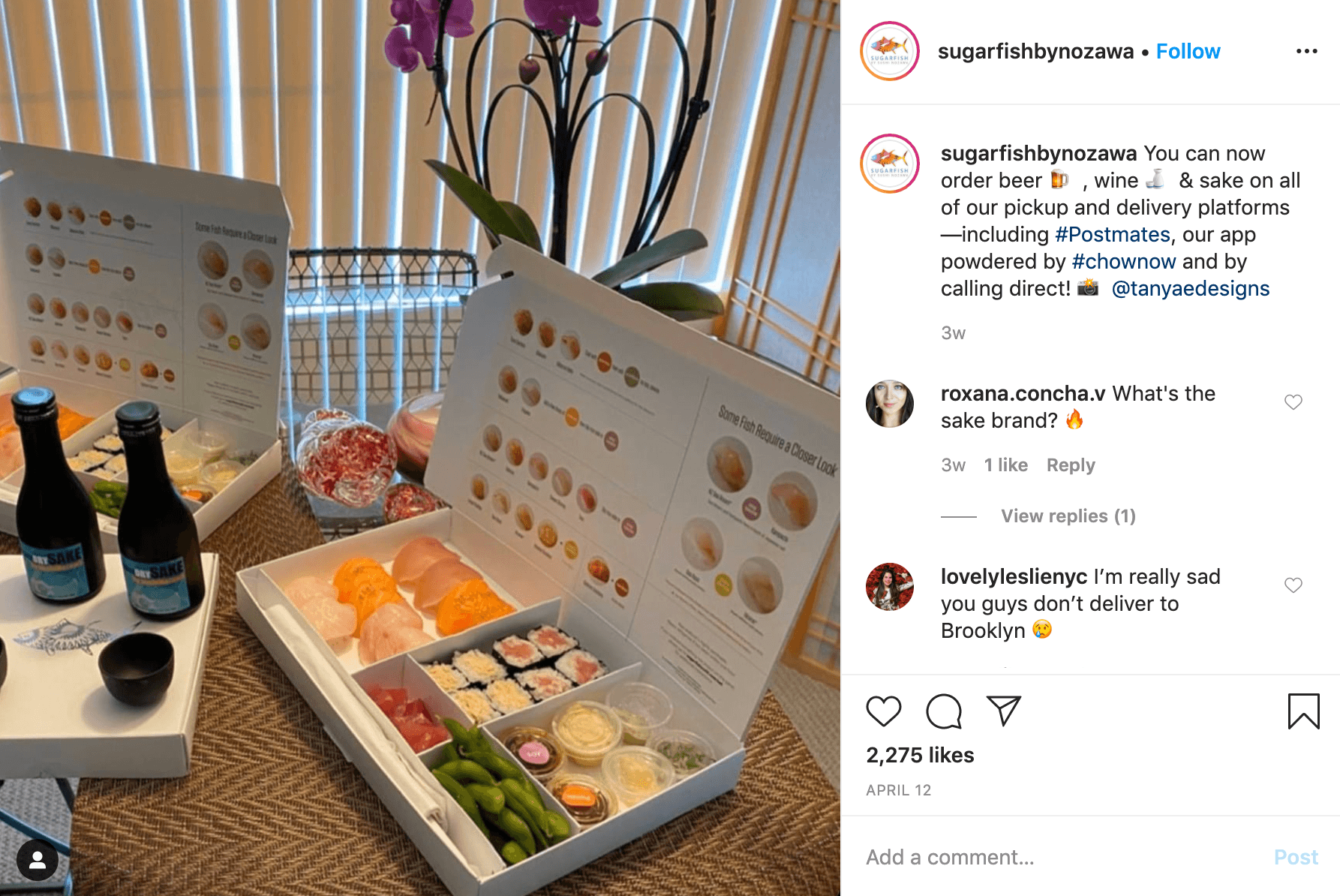
Make sure to respond to comments and messages, and always include relevant hashtags.
You could also run targeted campaigns using Facebook ads, Instagram ads, and Google ads.
5. Work with Influencers to Promote Your Restaurant on Instagram
Influencer marketing is a great way to reach foodies in desperate need of takeout!
For example, the foodie Instagram account @bestfoodphoenix is continuing to review and promote local restaurants to its 49,000 followers throughout the lockdown.
Here’s a promotion of the Mediterranean fusion bistro, Pita University.
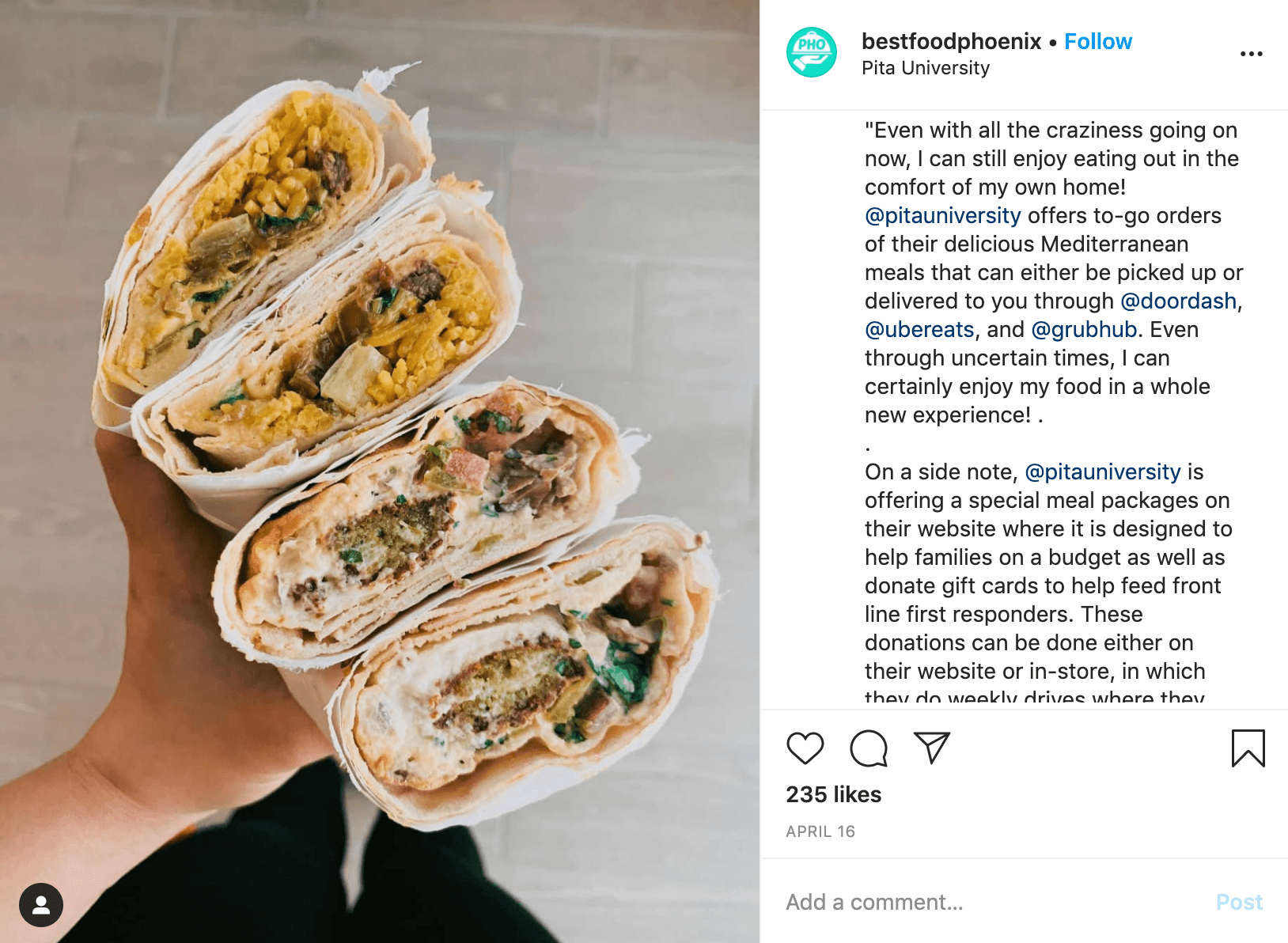
So, look for local foodie influencer accounts in your area and reach out to collaborate with them.
Summary: How to Move Your Restaurant Online
Learning how to move your business online may seem daunting. However, in a world of lockdowns and social distancing, many restaurants will need to adapt in order to thrive.
Thankfully, there are plenty of services ready to help you start a food delivery business.
In summary, there are three main ways to move your restaurant online:
- Food delivery marketplaces, such as UberEats, Grubhub, and Postmates.
- Point of sale add-ons, such as Toast and Upserve.
- Third-party, white-label services, such as MenuDrive, ChowNow, and GloriaFood.
How has your restaurant been affected by COVID-19, and what steps are you planning to take? Let us know in the comments below!



